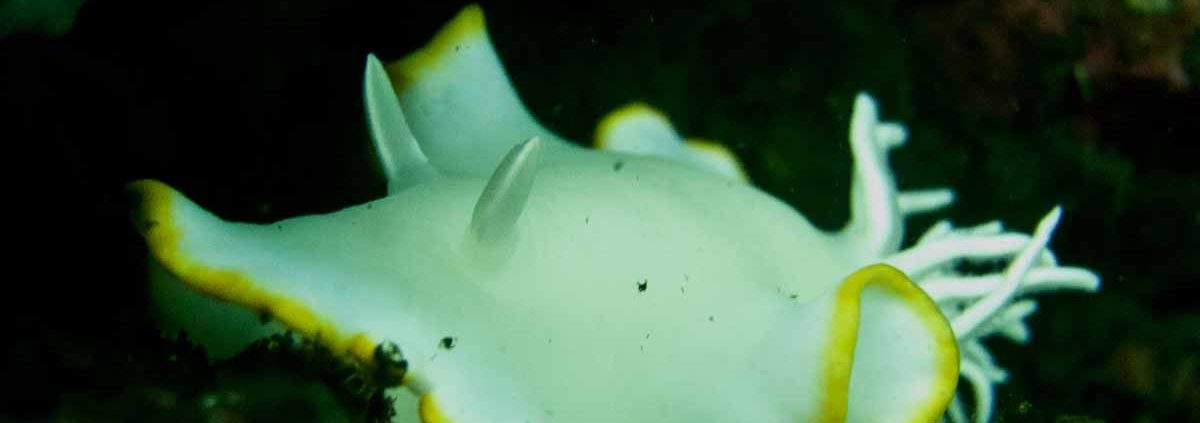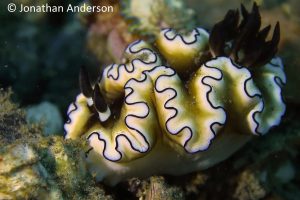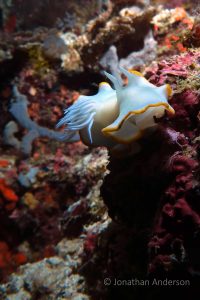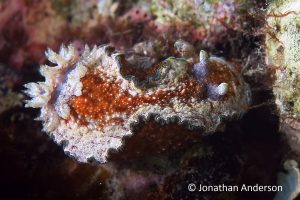17. Schizophrenic Slugs
A particularly graceful genus of Nudibranch, is the Glossodoris. Early marine biologists lumped many different slugs into this genus, but recent DNA testing is showing how some of them belong to a different genus, and should be called something else. All we know is that with frilly, fringing skirts and a gently undulating movement, finding one or two of these on a dive equals happy divers, whatever they may be called.
Dark Margin Glossodoris (Glossodoris atromarginata)
With a frilly mantle that would put an Edwardian duchess to shame, the Dark Margin Glossodoris is a particularly mesmerising slug when it moves, lifting and lowering its skirts in a gentle wave-like motion. It is currently undergoing an identity crisis, as a recent reclassification of Glossodoris has named them Doriprismatica atromarginata, or the Cheesecake Nudibranch, as it apparently resembles a slice of cheesecake. It also waves its gills around a good deal more than other nudis, and scientists suggest this is to help it breathe more easily, since it can’t absorb much oxygen into its body (secondary respiration) due to the thickness of its skin. Presumably with such a thick skin, it doesn’t mind what we call it. We all know someone like that.
Heron Ardeadoris (Ardeadoris egretta)
Another slug with an identity crisis, a number of the species in the genus Ardeadoris used to be Glossodoris, but what matters is this is a supremely pretty slug with a taste for the dramatic. It’s often seen on contrasting sites such as red or black sponges, as if it wants to be noticed. Its relatively large size helps too, so even the most myopically challenged divers among us can pick it out at a distance. Strange then that it is only seen rarely.
Girdled Glossodoris (Glossodoris cincta)
Another chunky slug growing up to 10cm, the Girdled Glossodoris has a thin trio of blue, black and yellow lines all along the mantle. Hidden within these are specialised pockets of venom, absorbed from the sponges which are its food source. Until some smarty-pants with a DNA testing kit says something different, these will remain one of the most popular Glossodoris around.







Leave a Reply
Want to join the discussion?Feel free to contribute!